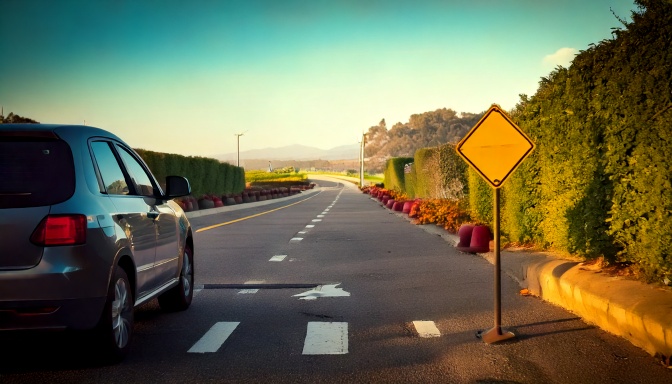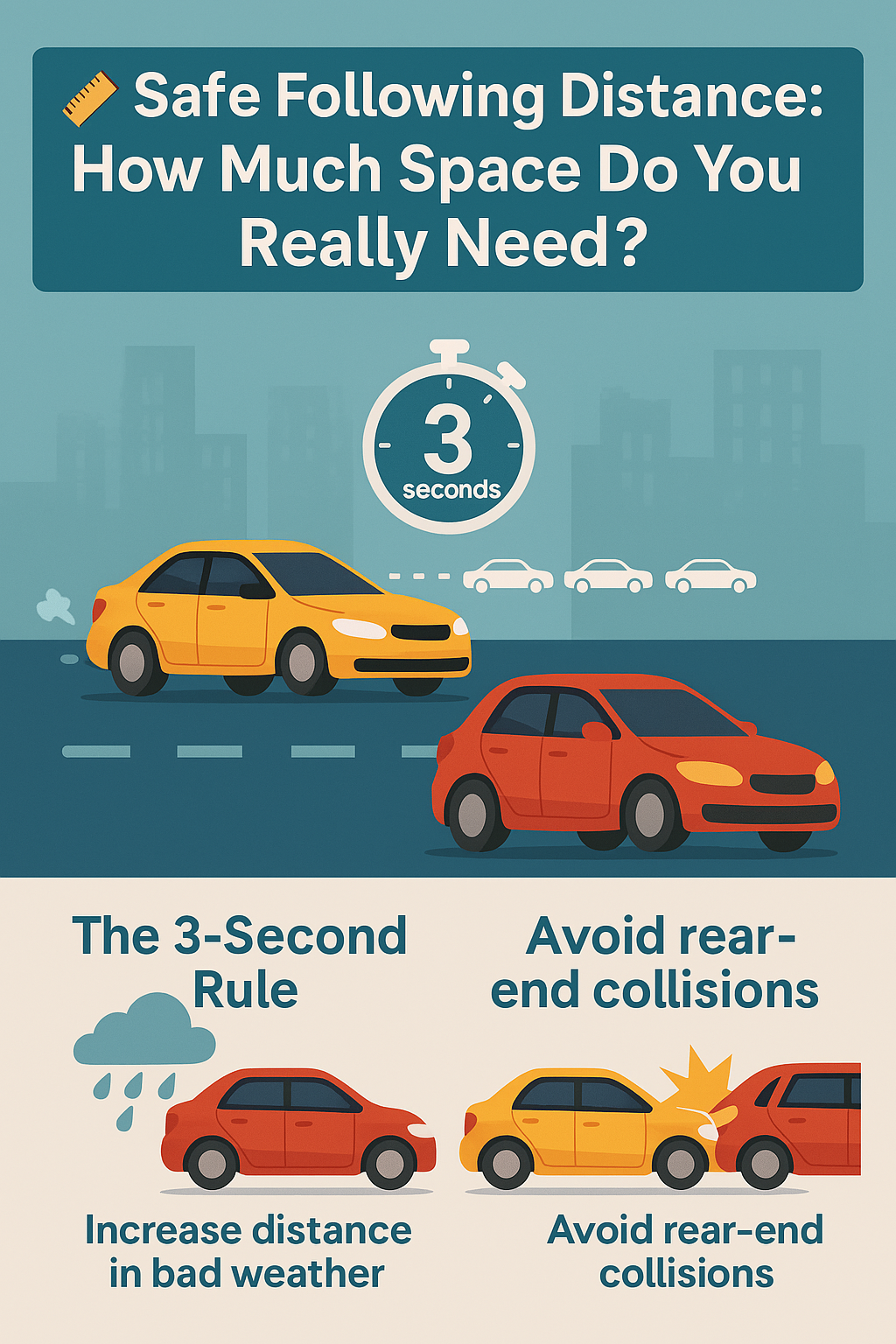Introduction
One of the most overlooked safety habits in driving is maintaining a safe following distance, Most drivers either tailgate without realizing it or misjudge the space needed to stop safely, Keeping a proper gap between your vehicle and the one in front of you reduces stress, improves reaction time, and prevents rear-end collisions.
In this article, we’ll explore what safe following distance really means, how to calculate it in real-time, and the biggest mistakes drivers make when following other vehicles.
🗂️Table of Contents
1. What Is a Safe Following Distance?
A safe following distance is the amount of space a driver should keep between their vehicle and the one ahead, It ensures you have enough time to react and stop safely in case of sudden braking.
2. Why Following Distance Matters
A proper following distance helps reduce driver stress and allows smoother traffic flow, It’s especially important in urban areas where sudden stops are more frequent, When drivers tailgate, they often overreact or brake harshly, which can trigger a chain reaction affecting several vehicles behind, Maintaining space also gives you time to make better decisions, like switching lanes safely or avoiding debris.

Rear-end collisions are one of the most common types of accidents and most of them happen because the following driver couldn’t stop in time, Maintaining distance gives you the cushion you need to avoid a crash, especially in high-traffic areas.
3. The 3-Second Rule (And When It’s Not Enough)
The general rule is to stay at least 3 seconds behind the vehicle in front, Choose a fixed point like a sign or tree; once the car ahead passes it, count ‘one-thousand, two-thousand, three-thousand ‘ You should reach that point after three seconds, In bad weather, at night, or while towing, increase it to 4–6 seconds.
4. Factors That Affect Following Distance
Driver alertness also plays a key role, If you’re tired, distracted, or under the influence of medication, your reaction time slows significantly, Drivers should also consider the condition of their brakes and tires, which can alter stopping distance more than they realize. Even elevation such as driving downhill can require more space to slow down safely, Speed, weather, visibility, road conditions, and vehicle type all play a role, A small car stops faster than a truck, and wet roads require more space to stop safely.
5. How to Measure Safe Distance While Driving
Besides the 3-second method, advanced cars offer distance warning systems, If your car doesn’t, stay aware of your speed and the stopping distance your vehicle requires.
6. Common Mistakes Drivers Make
Some drivers mistakenly think they can “predict” the behavior of the car ahead, This false confidence leads to dangerous habits like coasting behind a vehicle at high speed, assuming they won’t need to stop suddenly, Others assume that if the traffic is slow, close spacing is okay but even low-speed bumps can cause whiplash or insurance issues, Tailgating, distractions, and relying on the car ahead to do the right thing are dangerous habits, Many drivers also reduce distance in traffic jams, which increases risk, not safety.
7. How Technology Helps Maintain Distance
Modern vehicles often include adaptive cruise control and forward collision warnings, These systems automatically maintain distance and alert you when you’re too close.
8. Tips to Build the Habit
Use technology as a reminder, Set up your dash cam or phone mount to track timing visually when possible, If you ride with a learner or family member, talk about the 3-second rule to normalize the habit across your household, Lastly, don’t be afraid to slow down if someone is pressuring you from behind your safety matters more than their impatience, Practice counting seconds during daily drives, Turn off distractions and remind yourself that saving one second isn’t worth a collision, Over time, keeping space becomes second nature.
Conclusion
Changing driving habits takes time, but maintaining a safe following distance is one of the easiest adjustments you can make, Whether you’re driving through traffic, cruising on the highway, or navigating bad weather, the distance between vehicles matters more than many drivers realize, Make space a priority every time you start your engine, Safe following distance is one of the simplest yet most powerful tools to prevent accidents, By giving yourself time and space, you drive with more confidence and protect everyone around you, Start using the 3-second rule today and adjust based on road conditions, It’s a small habit that could make a big difference in your safety.
📌 Internal Link :
🌐 External Source :

